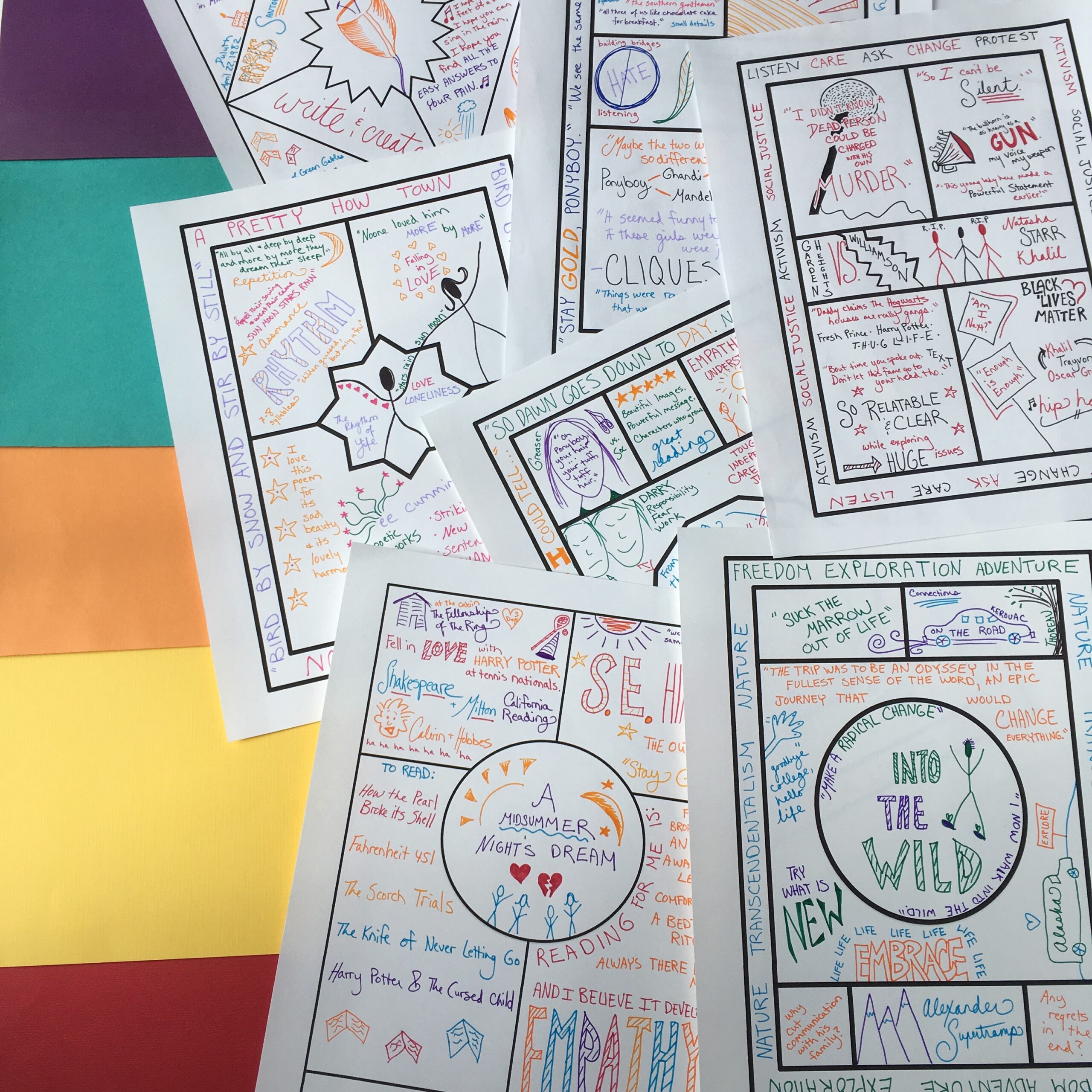
In a world filled with texts and Tik Toks, varying sentence structure isn’t always at the top of young writers’ minds. They may tell their stories with short, direct sentences. Over and over and over. Encouraging them to think of words, phrases, and different types of sentences as their writerly palette will only go so far; you need some helpful direct practice options.
In today’s episode of The Spark Creativity Teacher Podcast, we’re talking about three fun ways to help students change it up when it comes to sentence structure this year.
You can listen in to episode 159 below, click here to tune in on any podcast player, or read on for the full post.
Today’s episode is brought to you by Kind Cotton, a small family-run business changing the world one book at a time. When you purchase one of their lovely teacher tees or sweatshirts, they donate one inclusive children’s book (and they are almost up to 75,000!). I love their messages, and I love the way they are taking a direct path to help change the world for the better through reading. You can use my affiliate code “BETSY” for 10% off your next purchase right here.

#1 Challenge Students to avoid the “To Be” Construction
I first learned about the dull nature of the “To be” construction when reading Stephen King’s “On Writing Well.” (Highly recommend that book, by the way, it’s a treasure trove of wisdom). It’s amazing how often “to be” creeps into writing and makes it less vivid. Certainly, it’s OK to use it at times, but lean on it too heavily and you get a whole lot of grayish description.
Challenge students to edit their writing for “to be” anytime you want to help them with this. Add “watch out for too much ‘to be'” to your writing checklists. Try journal entries where students describe something with fabulous sensory details and don’t use “to be” at all, just to see what that’s like.
“They were swimming all day” becomes “They splashed in the pool, laughing, until their fingers turned into raisins.”
“He is hot” becomes “He felt like an overcooked fried egg, squished between the bacon and the bread.”
“She was tired” becomes “She drooped from her chair, sliding down the back in a slippery pool of sweat.”
See how eliminating “To Be” brings in more vivid writing and new sentence structures?
One fun way to help this idea stay to the front of your students’ minds is to challenge them to make posters changing a “To Be” sentence into something more vivid. Invite them to use black and white for the boring version, and a colorful range for the switcheroo. Then display the best posters under a header like “Change out ‘TO BE’ for SOMETHING BRIGHTER.”


#2 Try Shaped Writing Prompts
OK, I might be too excited about this one… but I AM SO EXCITED ABOUT THIS ONE. You can try this with any writing prompt, but I think it’s especially fun if you provide an exciting visual to help get a shaped story started.
For a shaped writing prompt, simply provide your students with differently shaped rectangles below your prompt, and ask them to fill each rectangle with their sentences. So as they write, if they get to a small rectangle, they need to fill it with a short and direct sentence. Then if they get to a long rectangle, they need to play with words and constructions to tell the next part of the story with a longer sentence.
You can fill out a model version in advance to provide them with some mentor sentences, project several sentence structure ideas on your board, or even do the activity alongside them on a Smartboard or chart paper so they can see how someone experienced with varied structure is doing it.


#3 Try a Sentence Challenge Game
For this quick activity, divide your students into groups and show them a funny or interesting visual along with a mentor sentence with whatever structure you’d like students to practice. So maybe you show them a picture of a kite surfer mid-back flip, and a simple sentence (one subject, one verb) describing it.
Once students see the picture and the example sentence, you invite them to write a simple sentence about it of their own. But with this caveat: If their sentence is the same as anyone else’s in the group, they don’t get a point in the round – think Scattergories. After everyone has written their sentences, group members share them aloud and jot down a point if they have a sentence no one else had.


So now you’ve set up a game where students are practicing a sentence structure type in a fun way.
If they write: “The boy flipped on his surfboard,” they will probably not get a point. But if they write “Ted cut the waves on his blue board,” they’ll get one.
Next, you can flip to a new type of sentence for the same picture and start another round. Practice anything you want students to try, from various simple forms to the more complex.
Once you’ve played the game once, you can return to it with different pictures and sentence structures. Play for five minutes or build up your momentum and give it a longer period. Expect some haggling over whether sentences are really the same – you may need to make rules about sentences that are within one word or punctuation type of each other and whether they count as the same!
Prizes are a definite plus!
OK, I hope you found at least one new strategy for practicing sentence structure that you’d like to try. Give a whirl to the “Avoid ‘To Be’ challenge, the shaped story prompt, or the sentence structure game, and let me know how it goes. I’m @nowsparkcreativity on Instagram – send me a DM and tell me how your students do!


























